Now that the prospecting research is done for your cold emailing campaign, and you’ve crafted relevant emails for everyone, it’s time to press that send button. Right?
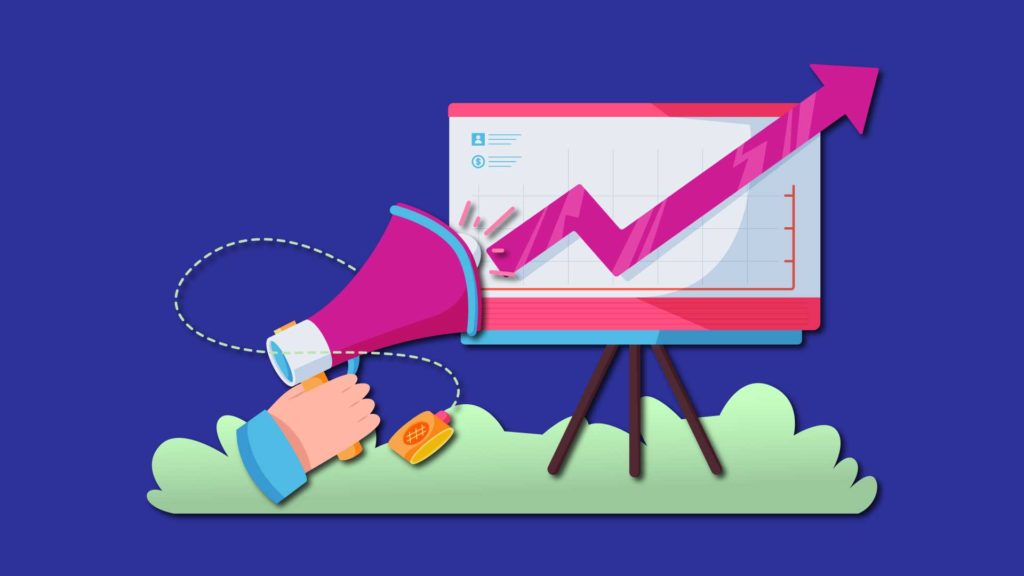
But, wouldn’t it be nice if there was a way to increase your click-through rate right from the first email?
Or even something that could make your email stand out in a crowd of competitors?
Good news everyone, your search ends here!
It’s called a Call to Action and we’ll talk about it in this article!
What is a Call to Action?
The call to action is the “next step” that you are asking your reader to take.
A prospect needs guidance after reading your email. Your brand story might be impressive, your testimonials tempting, and your arguments irrefutable. But without a call to action, you might get an “all that sounds nice, good for you, so what do you want from me?” attitude.
And that’s because a killer cold email needs something special at the end to drive sales. You know, like a gentle nudge in the right direction.
And the best part (for you) is that statistics show that up to 70% of small B2B businesses don’t use a CTA in their emails. So if you personalize your brand with a catchy CTA, it’ll put your business in the spotlight right away.
Where Should You Include Call to Action?
Inserting your call to action should be done depending on the platform you use. Not every social platform or blog post looks the same, and not every email you send to your prospects conveys the same message.
Just like you personalize cold emails based on various scenarios and the people that read them, your CTA should also be uniquely customized.
For example, what goes well on Twitter won’t look good in an email newsletter, and vice versa.
So let’s see where more you should include your CTA based on the platform you use!
When you’re sending a sales cold email, the best spot of your CTA is at the end of your emails so it’ll give a clear direction to the reader.
If your prospects are reading a landing page, your CTA should be in the center of the page, right below your headline.
For an affiliate page, the best location for your CTA is right in the middle of the page. Including an eye-catching red, yellow, orange, light blue, or green button boosts your engagement rates by 30%.
As for a conversion page, your CTA should be inserted in the header of that form.
For newsletters and marketing emails, things are even easier. Your CTA should be included in the “above the fold” section as newspapers like to call it. When it comes to online marketing, “above the fold” is the section that appears first, without having to scroll for the rest of the text.
YouTube has specific app versions for mobile, desktop, and smart TVs, so no matter where you put your CTA, your viewers will see it just fine. To make it more engaging, you can use audiovisual incentives like arrows, video previews, and funny sounds.
If you’re on LinkedIn, all you have to do is to click on the Pencil icon right next to the Custom CTA button and customize it to your liking.
On Twitter, your CTA can appear either on your profile bio or in a tweet, just make sure you insert the link you want your readers to follow!
Instagram is a bit different since it doesn’t allow clickable links in posts, so you’ll have to focus solely on CTA text. However, influencers can encourage followers to click on their Instagram profile bio or stories. Influencers can include and share links to your website.
If you want to insert a CTA in online courses or content, make sure it’s at the end of the page. It’s more important to convince your ideal customers how your brand will benefit them. Only after that, you can wrap it up with a powerful CTA.
And last but not least, if you’re placing your CTA in an ad, make it short so it’ll look great on mobile versions as well. Also, include a catchy button color to visually attract your clients.
What Does the Call to Action Do for Cold Email?
Just to give this out of the way, cold emailing is when you’re reaching out to possible clients so you can boost your sales, online visibility, and brand awareness.
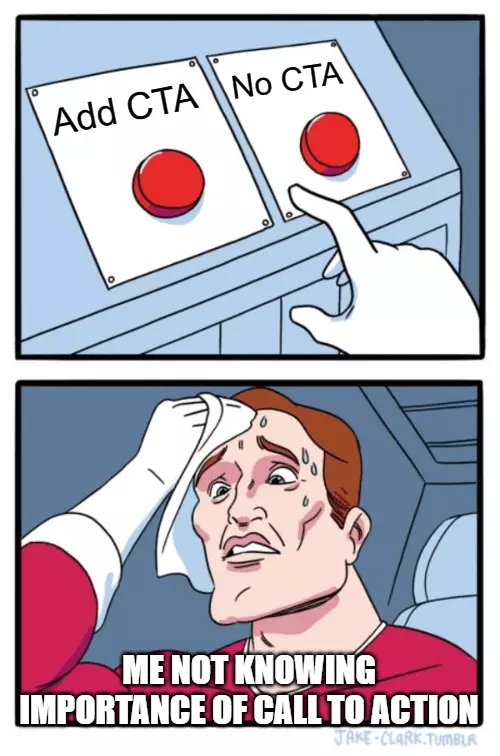
Now, the average click-through rate of cold emails is around 20-25%. Another cold email statistics show that with a fully customized, well-written CTA, you can raise your click-through rates to 30-35%!
However, the power of the call to action keyphrase is not limited to this. Here are a few more benefits that your brand can take advantage of if you insert a compelling CTA! Here are the reasons why you should include a call to action in cold emails.
- Increase Conversion Rate
- Generate Sales
- Builds Relationships
- Generate Leads
- Get Collaboration Opportunities
- Build Links
Increase Your Conversion Rate
A well-written CTA creates a better user experience because it guides your recipients through the next step you want them to make. This way, you get more responses and you boost your sales leads.
Generate Sales
A compelling CTA can get your cold sales prospects to be curious and check out your product. By using scarcity, urgency, and curiosity, you can trigger emotional responses so people would be more curious to check out your product.
Builds relationships
Just because you sent your prospects a cold email, that doesn’t mean they’ll reply back. They might delete the email or ignore it if it’s not convincing enough.
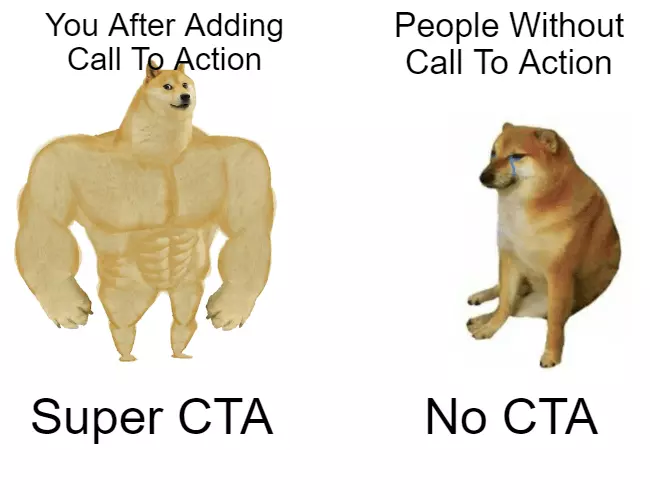
Some prospects will be difficult to deal with. You might have to negotiate with them or give them an exclusive offer to close the deal.
By inserting a relevant and persuasive CTA, you’re more likely to get your recipient to reply to your cold emails, start a conversation, and build stronger relationships.
Generate Leads
Your CTA can convince prospects to take specific actions. Want them to check out your content? Insert a relevant CTA and link to your posts.
Once they land on your blog and articles, they’ll see that your content helps them improve their business strategy, so you’ll generate leads quickly and efficiently.
Create Collaborative Marketing Partnerships
Sometimes, the goal of your cold email is to create strong marketing partnerships to boost your brand’s awareness.
In these situations, a collaboration-oriented CTA can get your recipient to collaborate on a project such as:
- Guest posting
- Webinars
- Podcasts
Build Links
By inserting an effective CTA in your cold emails, you grab your recipient’s attention and also show them a good opportunity to link to quality content.
This way, a good CTA helps you earn links from influential websites in your industry.
How To Write an Irresistible Call to Action That Converts?
A good CTA doesn’t just happen – copywriters try for years to master the art of convincing people to press that button.
Instead of spending years trying to become a good copywriter, I have some techniques that can help you write an attention-grabbing, sales-driving CTA.
Refine your vocabulary with niche-related keywords
A successful CTA needs to be relevant.
While “tag your friends” is a common, popular CTA for Instagram, it would be very awkward to put it on YouTube. “Check this video” is more suitable for video content.
So, when you’re crafting your CTA, make sure you use niche-related, platform-specific words so you won’t confuse your potential customer.
Reiterate your unique value proposition in CTA
Your unique value proposition is what makes your brand different in the marketplace. Maybe it’s your brand’s persona, your goals, or how you solve your clients’ problems.
When you’re writing your CTA, highlight that one particular benefit that makes your business unique and other competitors can’t offer.
Create an “Add to Calendar” link in your emails
Make it easier for your customers to attend your events, webinars, or meetings by including an “Add to Calendar” link. This way, your prospects can add your events to their personal calendars and choose a convenient date without rushing their decision.
Implement FOMO techniques
Ah, good old FOMO! Everyone knows what FOMO is. We felt it at least once in our life, just that we didn’t know it’s called FOMO. Like that time when you wanted to buy plane tickets but there were 2 seats left for that price. Or like a few months ago when you finally decided to be more creative and attend a pottery class but only 10 attendees could sign up that year.

“Fear of Missing Out” is a great technique to insert urgency in your CTA and help your clients make a quicker decision.
It’s a great emotional trigger because people have a tendency to overthink their decisions. It’s that vibe that you might make a mistake if you don’t take advantage of this time-limited opportunity.
Ask your questions loud and clear
Don’t beat around the bush when you’re asking your prospects to do something.
One, they’re losing interest. The average attention span is around 8 seconds, so get to the point quickly.
Second, you might seem like you’re lacking confidence. Or even worse, you might seem like you don’t know your brand’s worth. Being direct means that you know what you bring to the table.
When in doubt, ask for directions
When you’re sending a cold email, the ideal scenario would be to reach a valid email address and the ideal customers.
When you don’t know for sure if that happens, instead of just assuming, be honest and ask the recipient if they are the right person to talk to.
Implement Humor
Humor is what makes a brand memorable, trustworthy, and human. It grabs your audience’s attention and sets a relaxing atmosphere.
Give them options for communications
Not everyone uses the same tools to communicate. Some people might take half an eternity to respond to emails, but they’re available right on the spot when you give them a call.
In your CTA, give them multiple ways to get back to you. Alternatively, ask them nicely to say what their favorite way to stay in touch is.
Give them multiple choices
Give someone just one choice, and they’ll come back years laters still undecided.
By giving them multiple choices, you let them choose whatever feels the most comfortable to them and it’ll make your business more approachable.
Tips for Crafting an Effective Call to Action
To highlight once again how important a call to action is for your cold email outreach campaign, I’m going to give you another statistic that proves that emails with a CTA increased clicks 371%.
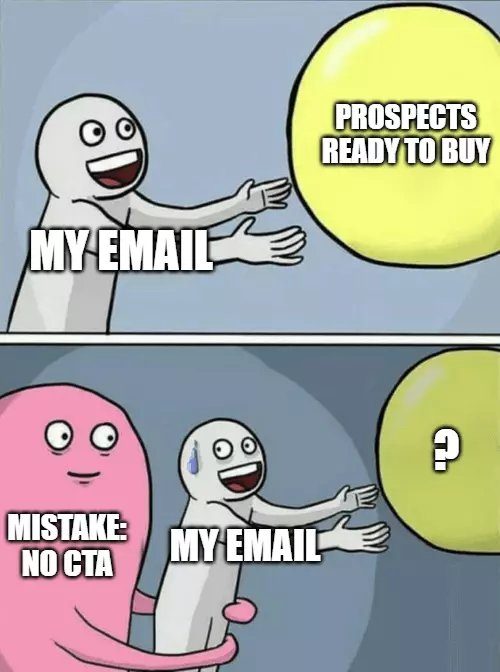
Here are a few more tips on how you can come up with a killer CTA!
Never add more than one CTA
One of the worst-case scenarios is that you give your clients so many options and instructions, they reach the decision fatigue stage – when they delay as much as possible making a decision or aren’t capable of deciding anymore.
Adding more than one CTA confuses your prospects and makes them delay a decision to such a point where they won’t even reply.
Personalize your CTAs
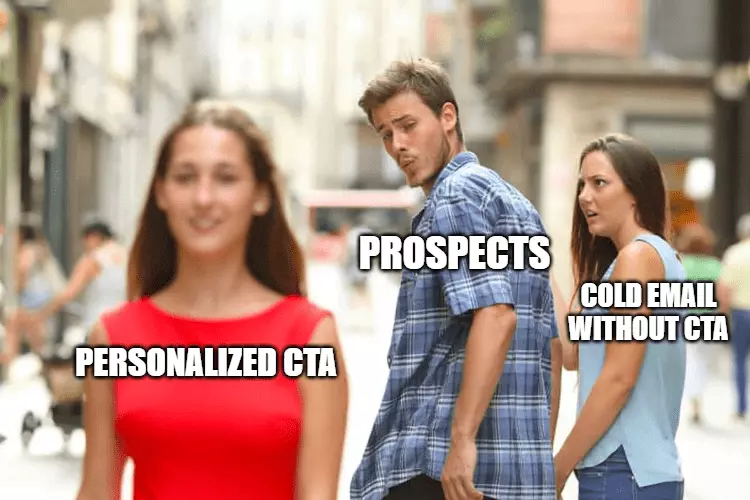
You can’t personalize your cold emails without customizing your CTA as well!
Keep your CTA relevant to the content of your email!
Make sure everything works properly
Imagine you’ve pressed that Send button and your cold email is out in the world, only to discover later that your CTA button doesn’t work or it messes up the whole text in the email body!
Always double-check that your CTA works great and it’s well integrated in the email body.
Don’t ask your potential customers to make tough decisions
No one likes a huge financial commitment right from the start. Tough decisions can put great pressure on your customers and there are high chances you will not be able to close a deal.
Make your business approachable by inserting clear, short, and simple CTAs.
Be respectful
No further explanation is needed for this one. Keep your CTA clean from any pushy, aggressive, or disrespectful sentences.
16 Best Cold Email Call to Action Examples that Actually Work
1. Shall We Schedule a Call?
Propose something that’s a no-brainer for your recipient. A call doesn’t last more than 10 minutes, so your prospects won’t feel like they’re spending too much time on the phone with you.
2. Would you like to schedule a 10 min call to learn how you can save hundreds of hours each month to connect with qualified sales prospects?
Sprinkle your CTA with specific and concise information. In this example, 10 minutes is a guarantee that your conversation will be short. Plus, address directly one of their possible pain points to get them curious about your product.
3. Let’s see what we can do for you in X minutes of your time. Select any date and time at your convenience on the calendar link.
Make it easier for your recipients to schedule a meeting with you by inserting a calendar link in the cold email. This way, your contacts won’t feel pressured to make a decision on the spot, and they can choose a date that’s not in conflict with yours.
4. Are you available for a 10-minute call on Monday/ tomorrow/next week?
Sometimes, prospects might read your cold email in a hurry, so they won’t have time to think and pick a date that’s convenient for them.
To reduce decision fatigue and keep the conversation going, suggest a specific date and work your way around the answer you get.
5. Let me know if this interests you, I’d be happy to share more!
Based on their answer, you can recommend content that they truly find helpful. You keep the conversation going, and they get to read useful content for their business strategy. It’s a win-win situation.
6. Multiple choice interest-based CTA:
Do me a favor and let me know which describes you best:
- Not interested
- Sounds terrific, but not the right time.
- Let’s schedule a chat now!
Another example that reduces decision fatigue and takes just a few seconds to go through is a multiple-choice interest-based CTA.
Questionnaire-like CTAs have a high response rate because they are concise and easy to fill in.
7. Multiple choice based CTA:
Here are some samples that fit you:
- Top Content Marketing Strategies That Gets Fast Results
- White Hat Link Building and Email Outreach Secrets Unlocked
- How to Successfully Launch on Product Hunt
Let me know if you’re interested and I can send over a few more topic ideas.
If you’re reaching out to someone for a, let’s say, guest post – it’s best to include a few pitches in your CTA.
However, make sure that the content you suggest is either unique or better than what they’ve already published on their website.
8. Just to confirm, what will your action be Growth or Avoid The Pain Point?
You can’t start a conversation if you don’t know what your recipient wants. Insert a CTA that can get them curious enough to reply back and find out what their needs are.
9. Let us know if you’d like to double your conversion rate.
Another good example of a CTA that can grab your recipient’s attention is to simply include your brand’s strongest feature.
Does your product double your clients’ conversion rate? Or maybe it increases their brand’s equity? Focus on the value you offer them and highlight that in your CTA.
10. Let’s move forward with an audit, shall we?
Audits are a great, free way to pinpoint areas for improvement that your clients might not be aware of. It’s a great conversation starter that focuses exactly on what they want, and how you can solve their pain points.
11. We belong together purr-fectly, why not schedule a meeting?
This CTA example is effective because everyone likes cats – even dog people, but they don’t want to admit it.
Jokes aside, inserting humor gives you a friendlier, more relaxed vibe. No one wants to read a boring cold email, so crack a few jokes!
12. I’m stoked! Do let me know what I can do to make this happen?
Showing empathy towards your customers helps them feel that their needs matter. Show them you genuinely care about their problems, you understand their needs, and you’ll build strong relationships.
13. We are offering limited audits to build our case study, shall we book you for one?
Including your recipients in case studies will make their story heard by a wider audience and reach new potential customers.
Craft your CTA around a way to grow your recipient’s business and they’ll be more likely to reply to your cold email.
14. Hey Joe, let me know if this works for you!
Using your recipient’s name makes your CTA more personal and it makes your customers feel important.
Avoid general, outdated, or vague formulas like “Dear Sir/Madam”, “To whom it may concern”, “Hey there”.
15. Are you the best person to talk to about this? If not, let me know who I should get in touch with.
Talking with the wrong person can be time-consuming. When you’re in doubt, just be honest and ask for the right person.
16. Do any of these times work for you?
Sometimes, giving your prospects just one date to reach out to you puts a lot of pressure on them.
Give your recipients flexible dates so they can choose whatever fits their schedule best.
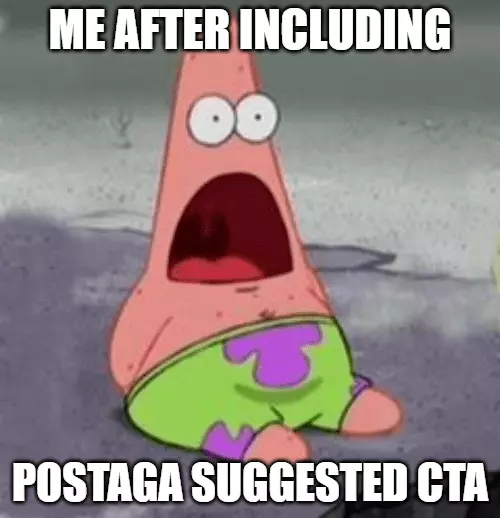
To Wrap It All Up
CTA is an important part of your email outreach content because it guides your potential customers through the whole email and helps them make a quick decision.
Crafting the perfect CTA will increase your conversation rates, boost your online credibility, and help you develop stronger relationships with your customers.
All you have to do is to come up with a personalized and compelling call to action that emphasizes what your brand offers to the audience. Your CTA is just one element of your cold email, so many things can go wrong. Learn to stop making common cold email mistakes.
Final Tip: A/B testing your call to actions can significantly increase the response of your cold email campaigns.
FAQs
Since you can’t predict if your potential customers have access to good internet when they open your email, it’s better to insert a text CTA. The button might not be displayed properly and your email might end up looking unprofessional.
An effective practice that sales teams are doing right now is to send a calendar scheduling link for a sale video call. This way, your prospects can choose the most convenient date for them without feeling rushed.
Make a habit of adding just one CTA so your message is short. Too many CTAs confuse your clients!
A CTA performs best when you place it at the bottom of your email along with the closing words. To make it stand out, you can put it a bit above your email signature.
For your CTA to feel natural, first you need to prove your value and have a story progression. Give your prospects a reason to contact you back before you insert the call to action. Ending things too abruptly with a CTA can make your email seem robotic or spammy.
A call to action is a specific “ask” where you are requesting your recipient to take a specific action (reply to your email, schedule a call, try your product).
Many tools have built-in trackers that offer great insights on bounce rates, click rates, open rates, and so on. These trackers generate a unique URL string per email subscriber so you can see who clicked on what.
Yes! You won’t necessarily get it right the first time. Try different calls to action, see how they perform in getting you responses or clicks.
In marketing, a CTA would be a request of your reader to take a specific action, like trialing or buying a product, subscribing to an email list, or commenting on or liking a video or post.
People won’t take action when they visit your page unless you come up with a strong incentive. For this, you can use scarcity / FOMO (“Fear of Missing Out”) techniques like early bird discounts, limited seats, putting an online timer, or testimonials.
Yes, you can do it, but it might weaken your results. Every email should have a call to action – something you want your reader to do next. If not, your reader might do nothing. You send emails because you want your readers to take action. Not specifying what they have to do next can leave your readers doing nothing.
A call to action in a cold email campaign is typically a line of text that either has a link or is a question inviting a response. For example, a link to a demo/trial page or meeting scheduler. Or, asking the recipient to reply with their opinion or feedback.
When you’re contacting people, CTAs should vary from situation to situation, so don’t use the same CTA on everybody!
Yes! A well-written call to action button guides your readers to the desired actions you want them to take. Thus, if your CTA is clear and engaging, it converts leads to loyal customers.
Get creative and use strong words that trigger enthusiasm and strong emotions for your readers. Also, create a sense of urgency by using scarcity and use design elements to your advantage so your CTA can be clickable and easy to spot.
CTA stands for “call to action.”
Free 14-Day Trial
Start building relationships now with your fully-featured 14-day trial!
How We Compare
Terms | Done-For-You Terms | Privacy | Write For Us | Press
© 2025 Postaga. All Rights Reserved. Made with 
